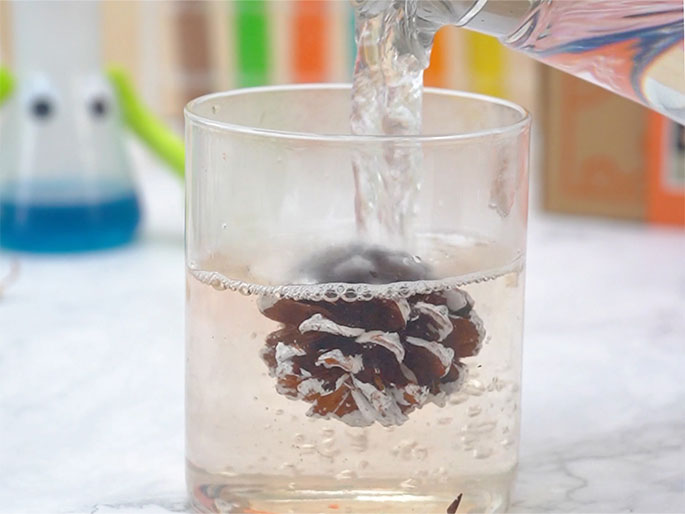Pine Cone Experiment
Stem Activities

Ages: 3-8

Greater than 30 minutes

Grownup needed
You've probably seen pine cone scales open up, but do you know how to make them close? This simple experiment reveals nature's wisdom and demonstrates a clever self-protection mechanism in plants.
Materials Needed
- Glass
- Hot water
- Pine cone
Step-by-step tutorial
Place the pine cone in the glass.

Pour hot water into the glass - be careful not to scald yourself, and ask an adult for help with this step.

Wait patiently for 15 minutes and observe what happens to the pine cone.

Once the water has cooled, remove the pine cone and compare how it has changed!

The Science Behind It:
When a pine cone is submerged in hot water, its scales contract because they are made of wooden fibres that absorb water. When water enters the scales, they expand and twist, causing them to close.
This phenomenon is actually a protection mechanism. When the scales close, they protect the seeds inside the pine cone, preventing excessive water loss and helping it survive in extreme conditions. This is one of the ways plants adapt to environmental changes.

 STEM Activities
STEM Activities Artistic Adventures
Artistic Adventures Playful Learning
Playful Learning The Recipe Repository
The Recipe Repository  Nature Explorations
Nature Explorations












